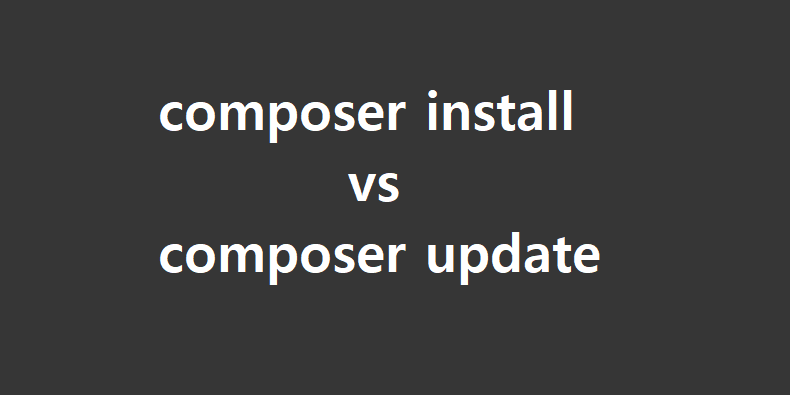
Understanding the difference between composer install and composer update is crucial for managing dependencies in PHP projects.
| Command | composer install | composer update |
|---|---|---|
| Purpose | Installs dependencies from composer.lock |
Updates dependencies to latest versions based on composer.json |
| When to Use? | When setting up a project or ensuring consistent dependencies | When you want to update dependencies to newer versions |
| What Happens? | Installs the exact versions specified in composer.lock | Updates packages, modifies composer.lock, and installs new versions |
Example:
1️⃣ Using composer install
- Suppose composer.lock contains Laravel 9.2.1.
- Running composer install will install exactly Laravel 9.2.1, ensuring all team members use the same version.
2️⃣ Using composer update
- If composer.json has "laravel/framework": "^9.0", it means Laravel 9.0+ is allowed.
- Running composer update will fetch the latest compatible version, e.g., Laravel 9.5.0.
- It updates composer.lock with new versions.
When to Use Which?
✅ Use composer install: Reads composer.lock and installs exactly what's listed. when setting up a project or deploying to production.
✅ Use composer update: Updates the dependencies listed in composer.json, and rewrites composer.lock. It’s used when you want to upgrade packages.
Tip: Always commit composer.lock to version control to avoid unexpected version mismatches in production. 🚀
composer install vs composer update – आसान भाषा में अंतर
🛠️ 1. composer install – Jo version mil chuka hai, wahi chahiye
- Ye command
composer.lockfile ko padhta hai - Aur usme jo exact version likhe hain, wahi install karta hai
- Ye use tab karo jab:
- Aapne project clone kiya ho
- Aap chahte ho sab system pe same dependency version ho
📌 Use karo: Jab project clone karo ya production mein setup karo
🔧 2. composer update – Mujhe naye version chahiye (allowed range ke andar)
- Ye command
composer.jsonfile ko padhta hai - Aur har dependency ka latest matching version download karta hai
composer.lockfile ko bhi update kar deta hai- Ye use tab karo jab:
- Aap packages ko latest version pe lana chahte ho
- Development ke time upgrade karna ho
📌 Use karo: Jab aap packages update karna chahte ho (aur team se sync karlo)
📌 एक लाइन में अंतर:
🔸
composer install= Jo mila tha, wahi chahiye (composer.lock)
🔸composer update= Naya chahiye, lekin condition ke andar (composer.json)
🎯 Composer Install vs Update – Clone karne ke baad kya karein?
Jab koi developer aapka PHP project GitHub se clone karta hai, to uske paas do important files hoti hain:
composer.json– Aapne kaunse packages chahiye likha haicomposer.lock– Aapko kaunse exact version mile woh likha hai
✅ Clone karne ke baad kya command chalani chahiye?
composer install
📌 Ye command kya karega?
- Ye
composer.lockfile ko padhega - Aur wahi exact version install karega jo aapke system pe chal raha tha
- Sab developers ke paas same version hoga, koi problem nahi
❌ Agar galti se composer update chala diya?
- Ye
composer.jsonpadhega - Latest allowed versions install karega
- Aur
composer.lockfile ko update kar dega - Isse sabke system pe alag-alag version ho sakte hain — problem ho sakti hai
🔑 Simple Rule:
Project clone karo ✅
Fir sirfcomposer installchalao ✅composer.lockko follow karo ✅
✅ Final Note:
Jab bhi project clone karo, hamesha
composer installchalana chahiye taaki sabko same version mile aur code stable rahe.

Comments (0)
No comments yet. Be the first to comment!